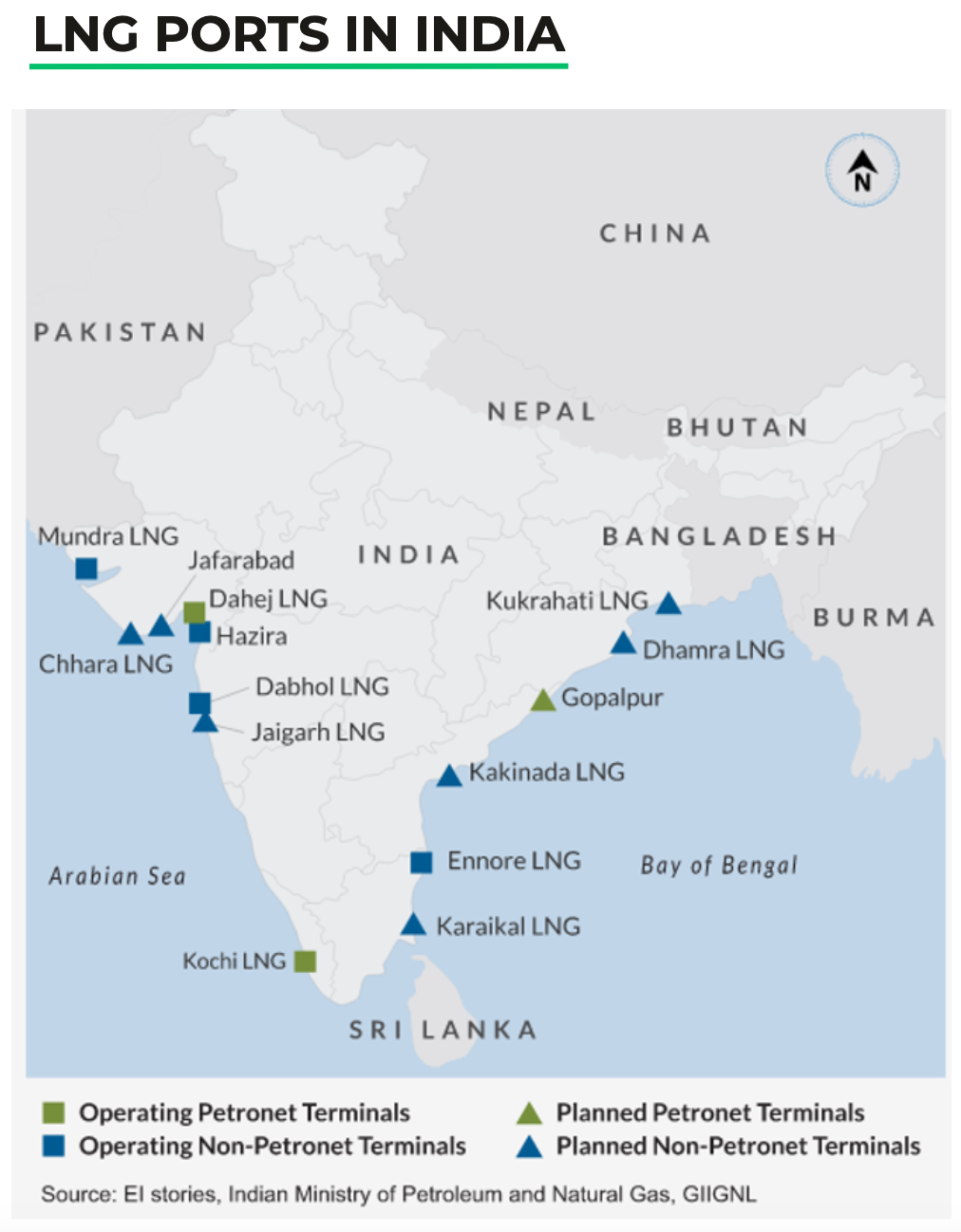What is Downstream in Natural Gas?
In the downstream portion of the LNG value chain, marine or waterfront facilities are known as import terminals. These terminals receive deliveries of LNG from carriers, store the LNG, and then convert it back into a gaseous state through regasification.
According to Clear Seas, in 2018, there were 132 LNG import terminals globally. As of April 2022, there are 901.9 million tonnes per annum (MTPA) of regasification capacity across 40 markets, with 49.8 MTPA added in 2021 due to the commissioning of five new import terminals and the completion of five expansion projects at existing terminals. The Al Sour LNG import facility in Kuwait had the largest addition of 11 MTPA. The largest LNG import terminal is Located on the northwest coast of South Korea; the Incheon terminal is currently in South Korea. Most LNG regasification terminals are located in Asia, where demand for natural gas is high, with countries such as Japan, South Korea, China, and India being significant importers of LNG. Europe also has several import terminals, while the United States has rapidly expanded its export capacity in recent years.
The number of LNG regasification terminals is expected to grow in the coming
years, driven by increasing demand for natural gas and the need to diversify
energy sources.
China has the largest LNG import capacity under development and is expected
to add over 200 million metric tons in annual capacity. However, the
development of new terminals will also be impacted by factors such as market
conditions, government policies, and environmental concerns.
Currently, there are seven import terminals in India: Dahej, Hazira, and Mundra in Gujarat; Dhabol in Maharashtra; Kochi in Kerala; and Ennore in Tamil Nadu. One floating storage regasification unit (FSRU) at Jaigarh Port in the Ratnagiri district of Maharashtra, India. In 2022, India is projected to increase its LNG import capacity by 40% by completing new terminals that have faced significant delays. India is the fourth largest global buyer of LNG, with six import terminals and a collective nameplate capacity of 42.5 million tons per year. However, 17 million tons will be added in the coming year.
An LNG (liquefied natural gas) import terminal is a facility that receives LNG from export terminals located in other countries and converts it back into its gaseous state through the process of regasification so that it can be distributed to consumers in the local market.
LNG import terminals typically consist of the following components:
LNG Storage Tanks: These tanks are designed to store the liquefied natural
gas transported by LNG carriers from export terminals.
Regasification Units: These units convert the LNG back into natural gas
through regasification, which typically involves heating the LNG to its
boiling point, which causes it to vaporize into natural gas.
Gas Pipeline Infrastructure: This infrastructure transports natural gas from
the import terminal to local distribution networks, including pipelines,
compressor stations, and other facilities.
Marine Facilities: These facilities receive and unload LNG carriers and can
include jetties, docks, and other infrastructure.






